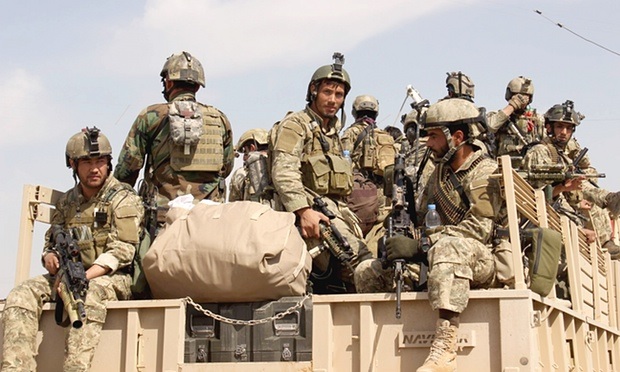By Thomas Gibbons Neff
Afghan National Army soldiers arrive to start an operation soon, outside of Kunduz city, Afghanistan. According to a recent Pentagon report to Congress, the security situation in Afghanistan has deteriorated in the year since U.S. and coalition ended combat operations in the country. While Afghan forces have taken the lead in some key areas, they remain reliant on U.S. assets for logistics and operational planning, in addition to filling key gaps in fire support.
The report, titled “Enhancing Security and Stability in Afghanistan,” also indicates that the Islamic State’s foothold in the east could pose problems in the coming months since the militant group’s recently minted offshoot could begin targeting coalition personnel and locations. While Afghan forces have shown improvements in coordinating air support and an increased ability to conduct larger operations, albeit with U.S. support, they are struggling to figure out how to distribute its forces properly throughout the country. This inability has consistently allowed the Taliban to take advantage of poorly placed Afghan units, and in many cases, overrun them.
According to the report, the Afghan army still concentrates its forces at checkpoints and fixed positions such as small outposts instead of putting them into cohesive units that can move fluidly and aggressively across the battlefield. As of September 2015, 53,000 Afghan national army soldiers roughly 30 percent of the army’s entire force were distributed to fixed sites, while half of the 147,000 strong Afghan National Police were as well.
While there have been some improvements in making both forces into a more coherent fighting force (the Afghan army has reduced its presence at checkpoints by 40 percent), initiatives to restructure Afghan forces have been “uneven.” Additionally, in spite of some reorganization within the Afghan army, the report states that Afghan forces have had a hard time translating the improvements into “offensive combat power.”
How this elite Air Force rescue squadron’s mission has evolved in Afghanistan] Regardless of troop numbers and capabilities, fighting from checkpoints and outposts almost always ensures that when the enemy attacks, it will have the advantage.
This is because the enemy in this case the Taliban decides when and where the attack will happen and that certain battlefield conditions are in place in order to have the greatest chance of success. By attacking a fixed site, the Taliban has time and space to amass a force large enough to overwhelm whatever Afghan force they’re attacking despite the Taliban having, on a whole, much smaller numbers.
According to the report, this poor force distribution is exacerbated by how diffuse the Afghan checkpoints are, especially in rural areas, thus allowing the Taliban to capitalize on logistical issues and the time it takes Afghan forces to reinforce whichever area is under attack. This has contributed to successful Taliban operations and a subsequent spike in Afghan casualties.
Meanwhile, Afghan attrition rates have stayed level with the prior year (at around two percent), but they are “taking higher casualties in virtually every province this year,” according to the report. According to data compiled by the Long War Journal, the Taliban controls 37 districts in Afghanistan and contests another 39. In recent weeks, fighting has been especially intense in portions of Helmand Province, the Taliban’s birthplace, where Afghan units have been fighting alongside U.S. special forces to hold various population centers such as Marjah, and Sangin. The extent of U.S. involvement in the province was first reported earlier this week by The New York Times. Three of Helmand’s districts are held by the Taliban while six are heavily contested, according to the Long War Journal.
Setbacks in Helmand follow a lengthy Taliban campaign to retake the city of Kunduz in October an attempt that ultimately failed after being pushed out of the city by Afghan and U.S. forces supported by U.S. Airpower.


